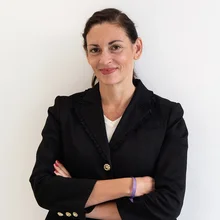
Financial stability initiative: ECB’s SSMnet
Online tool fosters cohesion, agility and effectiveness for supervisors working across member institutions of the European Single Supervisory Mechanism

Europe’s Single Supervisory Mechanism (SSM) took a major step forward last year to foster cohesion among its more than 7,000 staff members working at the European Central Bank (ECB) and national authorities in 21 different countries. It did this by launching SSMnet, a comprehensive digital platform developed in-house, in June 2021. SSMnet allows staff members to interact with each other, follow the projects the supervisory system is undertaking, while offering training and resources on key supervisory topics and country-specific issues.

In barely nine months, SSMnet has become an important point of reference. More than 90% of staff members are active users, with total visits to the platform having rapidly increased to reach more than 150,000 in February 2022. Currently, daily visits hover around 800 to 1,000, with peaks of 1,500 unique visitors. The most searched content in March includes items such as anti-money laundering, and Russia or Ukraine, which indicates the platform is being used to support current supervisory concerns.
“Our main challenge, being a multinational supervisory mechanism encompassing 21 countries, is how to deal with a huge wealth of information,” says Edouard Fernandez-Bollo, ECB representative to the supervisory board. “And this is not only quantitatively complex, it requires converging supervisory and financial stability cultures. Our final goal is to make the SSM as a whole function in a unified way.”
Even prior to the Covid-19 pandemic, the SSM faced a tricky balance when co-ordinating the actions of teams operating remotely on a permanent basis. Supervisors need to take account of the local context in terms of where banks operate and perform on-site functions. But at the same time, the SSM aims to create a level playing field that delivers predictable supervisory outcomes for banks across the continent.
Tool to foster integration

“The platform allows us to better co-ordinate the work of supervisory teams working remotely and ensure knowledge is shared,” says Cécile Peterka, head of section for supervisory capability building at the ECB. “Developing a common supervisory culture is crucial to ensure faster supervisory reaction, better co-ordination in crisis situations, easier access and awareness of quantitative tools, hence more intrusive supervision. This is key to preserve a level playing field among financial institutions, and ultimately to ensure the credibility of the SSM. “
To further integrate supervision, make it more agile and be able to quickly react to new crises such as the coronavirus pandemic or the Russian invasion of Ukraine, the SSM restructured its organisation in 2020–21 to create a horizontal capacity. This means that, instead of having just one market specialist in every Joint Supervisory Team (JST), teams that supervise one specific bank, the ECB has now grouped subject experts in a horizontal specialist team able to support all JSTs when needed.
In this context, SSMnet offers an easy-to-use tool, a shared space to keep all members up to date.
“We have provided a single place for staff to access the supervisory code stemming from a wide variety of sources,” says Fernandez-Bollo. “But it’s not only that you have the information at your disposal, it also structures it, it focuses on the information that really matters for banking supervision.”
Analytical capabilities
SSMnet is a platform for supervisors made by supervisors. Before the team in charge of the project started working on the platform, it asked supervisors which were the most pressing problems they faced, and which tools they thought would better help them carry out their duties.
The result is a platform structured around three main pillars. First, the homepage offers a daily flow of news and information, including internal and external developments on banking supervision, and newsletters on key topics such as fintech or credit risk. This forum also publishes announcements by supervisory board members on recent actions, as well as their reflections on current challenges.
Additionally, JSTs get a weekly update on what the SSM calls horizontal supervisory task requests (HRCTs). This covers the most recent actions JSTs have made to the new horizontal specialists in core areas such as risk management, climate change and cyber security. Through this area, teams can request support on these matters.
The homepage also allows access to information on upcoming events, workshops and seminars.

The second pillar offers access to supervisory knowledge, where staff can use tools to analyse data or benchmark banks’ performance. It also offers country-specific information published by national authorities, as well as more than 250 training sessions and seminars available via e-learning modules.
This analytical module includes specific data covering the 115 significant banks directly supervised by the ECB. For instance, staff members can directly access individual banks’ exposures to markets such as Russia and Ukraine, the analysis of which can rapidly inform supervisory actions that may be needed at an institutional level or to understand the level of risks the current crisis could represent for the European banking sector as whole.
“Knowledge is our key asset. Education and training have a strategic dimension because of the diversity of staff, the complexity of our activities and our responsibility to ensure financial stability in Europe,” says Peterka.
The third pillar is the connectivity platform that helps staff to make contact with more than 7,000 colleagues across the SSM. This area includes 30 working groups, with experts from all member states and business areas. Staff can also explore JSTs’ individual pages, and contact their members.
Fernandez-Bollo uses SSMnet on a daily basis because it “provides an overview of all our activities I wouldn’t have otherwise”, he says: “It allows me to decide what material to incorporate into my work when the processes began. It is a powerful tool to unify our work, and identify priorities across our vast network of institutions. It also enables us to feel like a community.”
The Central Banking Awards were written by Christopher Jeffery, Daniel Hinge, Dan Hardie, Victor Mendez-Barreira, Ben Margulies and Riley Steward
Only users who have a paid subscription or are part of a corporate subscription are able to print or copy content.
To access these options, along with all other subscription benefits, please contact info@centralbanking.com or view our subscription options here: subscriptions.centralbanking.com/subscribe
You are currently unable to print this content. Please contact info@centralbanking.com to find out more.
You are currently unable to copy this content. Please contact info@centralbanking.com to find out more.
Copyright Infopro Digital Limited. All rights reserved.
As outlined in our terms and conditions, https://www.infopro-digital.com/terms-and-conditions/subscriptions/ (point 2.4), printing is limited to a single copy.
If you would like to purchase additional rights please email info@centralbanking.com test test test
Copyright Infopro Digital Limited. All rights reserved.
You may share this content using our article tools. As outlined in our terms and conditions, https://www.infopro-digital.com/terms-and-conditions/subscriptions/ (clause 2.4), an Authorised User may only make one copy of the materials for their own personal use. You must also comply with the restrictions in clause 2.5.
If you would like to purchase additional rights please email info@centralbanking.com test test test




